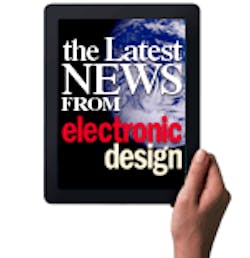Conversion Efficiencies Trigger Power-Semi Market Resurgence
Trading figures for the power semiconductor discrete and module market took a spectacular jump forward during 2010. Those results are in direct contrast with the depressed market conditions that industry sector experienced in 2009.
A new report from industry analysts IMS Research says the power semiconductor business achieved a 43% growth figure. The recovery charge was led by German chip company Infineon, which managed to retain its top spot from the previous year (see “Power Semiconductor Top Ten In 2010”). IMS reckons that Infineon, which supplies discrete and power modules, realised the biggest gains in the power MOSFET area and managed to improve its rating in IGBT technology.
Infineon wasn’t the only one to make lucrative strides in 2010. Other “winners” last year included Fuji Electric, International Rectifier, Mitsubishi, STMicroelectronics, and Vishay.
The analysts calculate that 2010 climbed to an overall total market value of approximately €11.5billion. Principal motivators of this surge all toil away in the technological area of power conversion, particularly in automotive and industrial motor-drive applications.
The power-module market grew by 65% in 2010, significantly faster than discrete power semiconductors. More specifically, the recovering industrial motor-drive market contributed strongly to the increased sale of IGBT-based technology during 2010.
Market growth was further stimulated by the take-up of inverter products for renewable energy applications. In fact, sales of power modules relating to inverters mushroomed to over 90% thanks to an increase in solar photovoltaic system installations.
Werner Obermaier, head of product marketing at Vincotech, believes that the increasing demand for motor drives with higher power levels is also driving the demand for power modules with higher currents. Conventionally, this requirement is met by using dedicated high-current power modules.
Obermaier’s company, however, offers an alternative approach of paralleling IGBTs and diodes within one power module to extend its power capability. One example is the use of a 35A six-pack module as a 100A half bridge, which improves thermal performance.
In another motor-drive development, Stegia has incorporated ON Semiconductor’s AMIS-30624 two-phase stepper-motor driver, with integral position controller and I2C serial interfacing, into its stepper-motor product line.
The AMIS-30624’s controller can accommodate different motor types, positioning ranges, and speed/acceleration parameters. Its sensor-less stall detection feature identifies blocked rotor and end-of-run conditions, preventing the motor from stalling. Thanks to its small dimensions and high power density, the controller can be used in stepper motors with diameters as small as 6mm.
Importantly, the AMIS-30624’s design also contributes towards silent motor operation. The commands for controlling the acceleration, deceleration, position, and speed of the motor are performed via the AMIS-30624’s I2C interface in microsteps, resulting in silent motor operation whilst being able to provide diagnostic feedback data.
http://www.imsresearch.com/
http://www.vincotech.com/
http://www.onsemi.com/
http://www.stegia.se/
Power Semiconductor Top Ten In 2010
1. Infineon
2. Mitsubishi
3. Toshiba
4. STMicroelectronics
5. Vishay
6. International Rectifier
7. Fairchild
8. Fuji Electric
9. Renesas
10. Semikron
Courtesy of IMS Research
